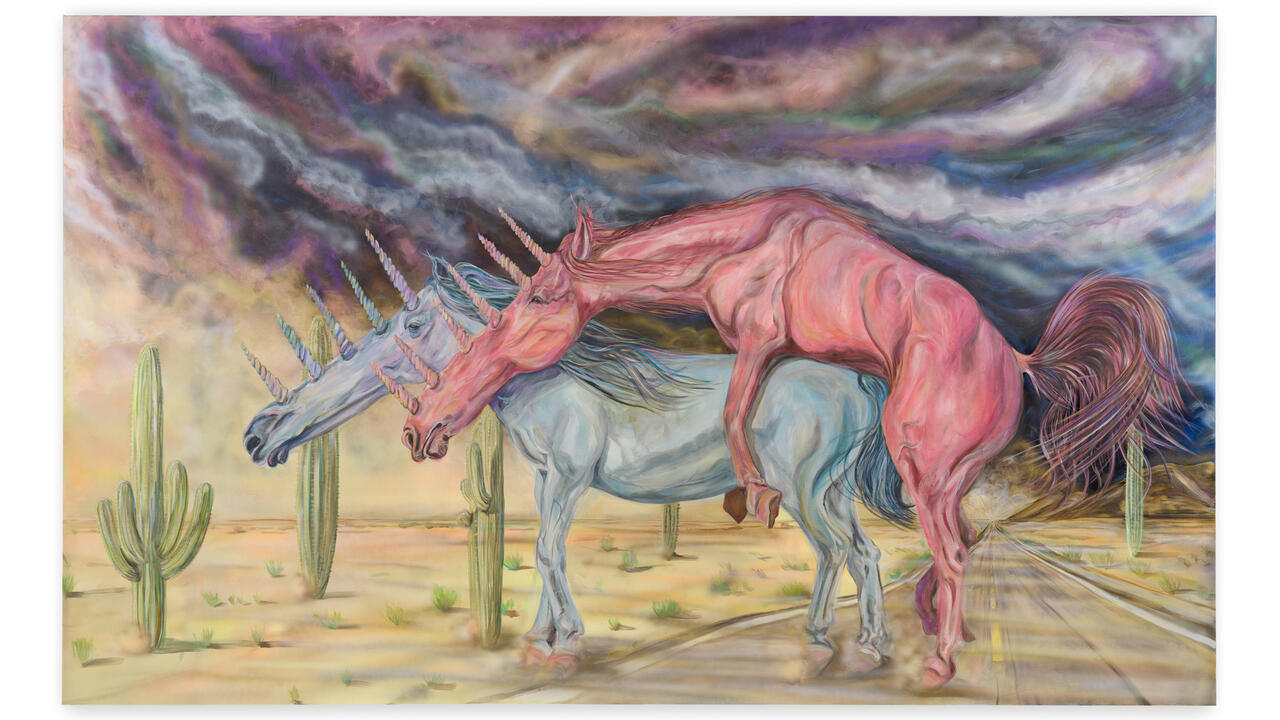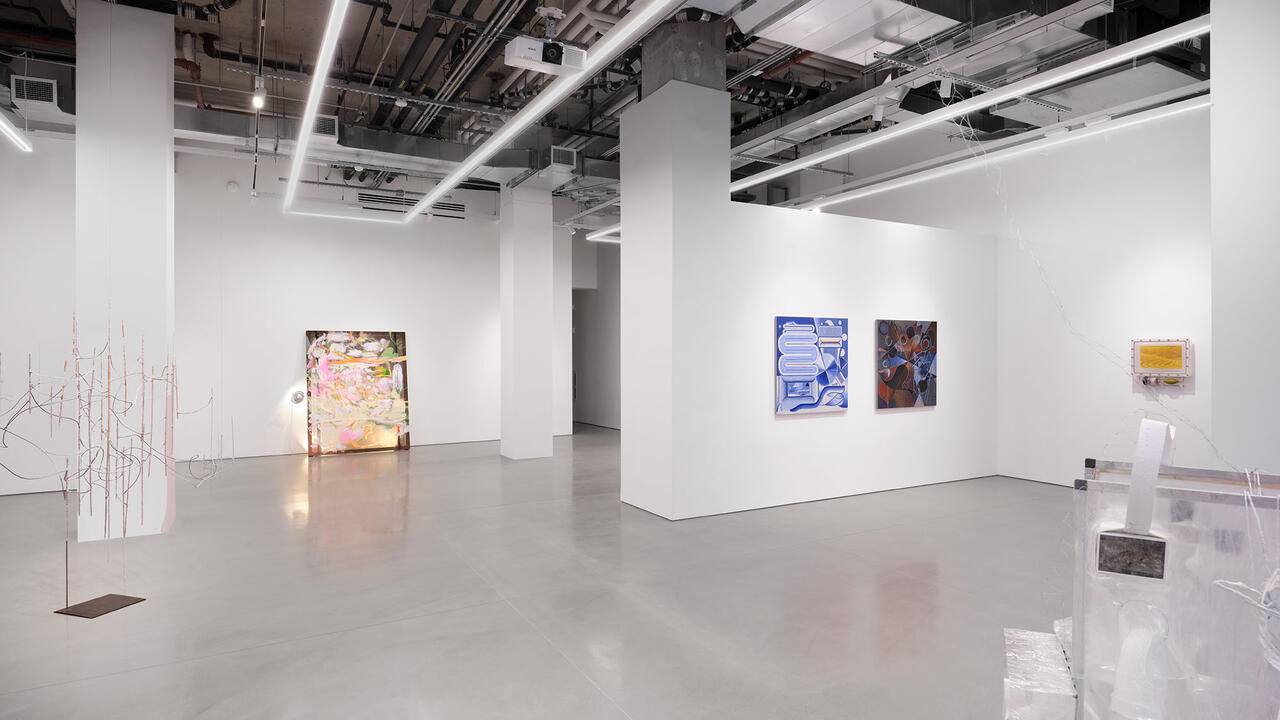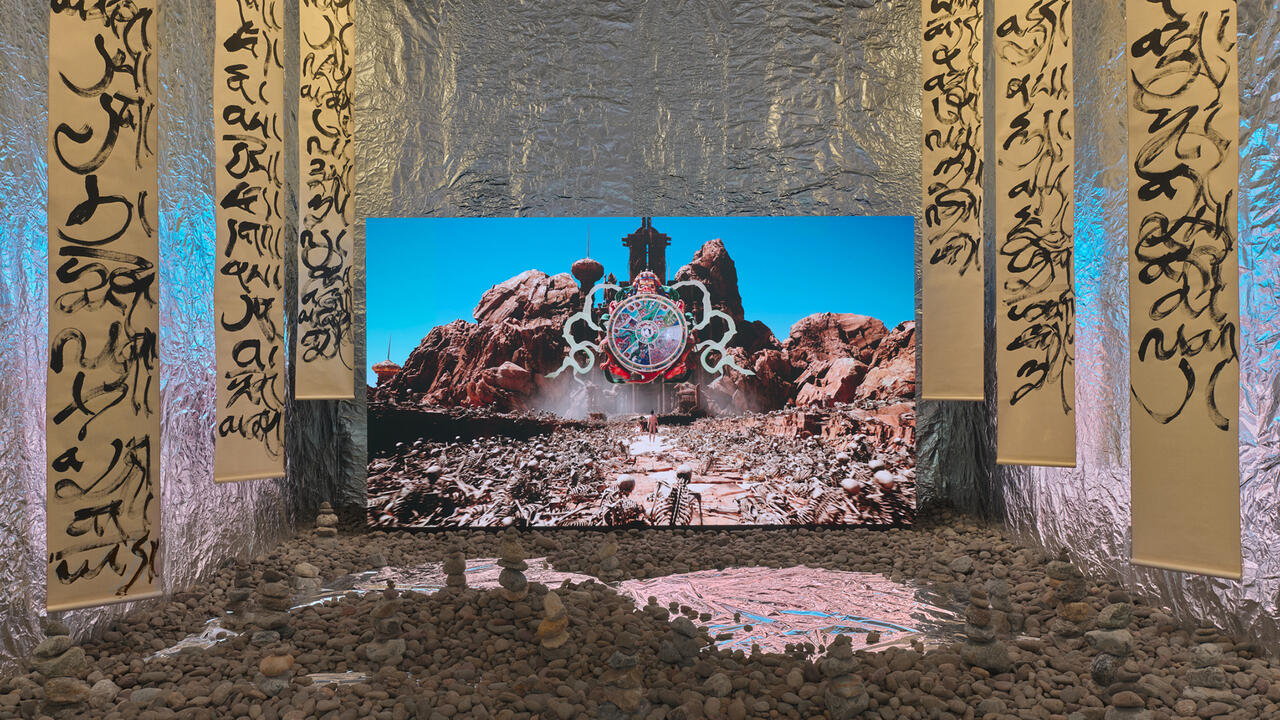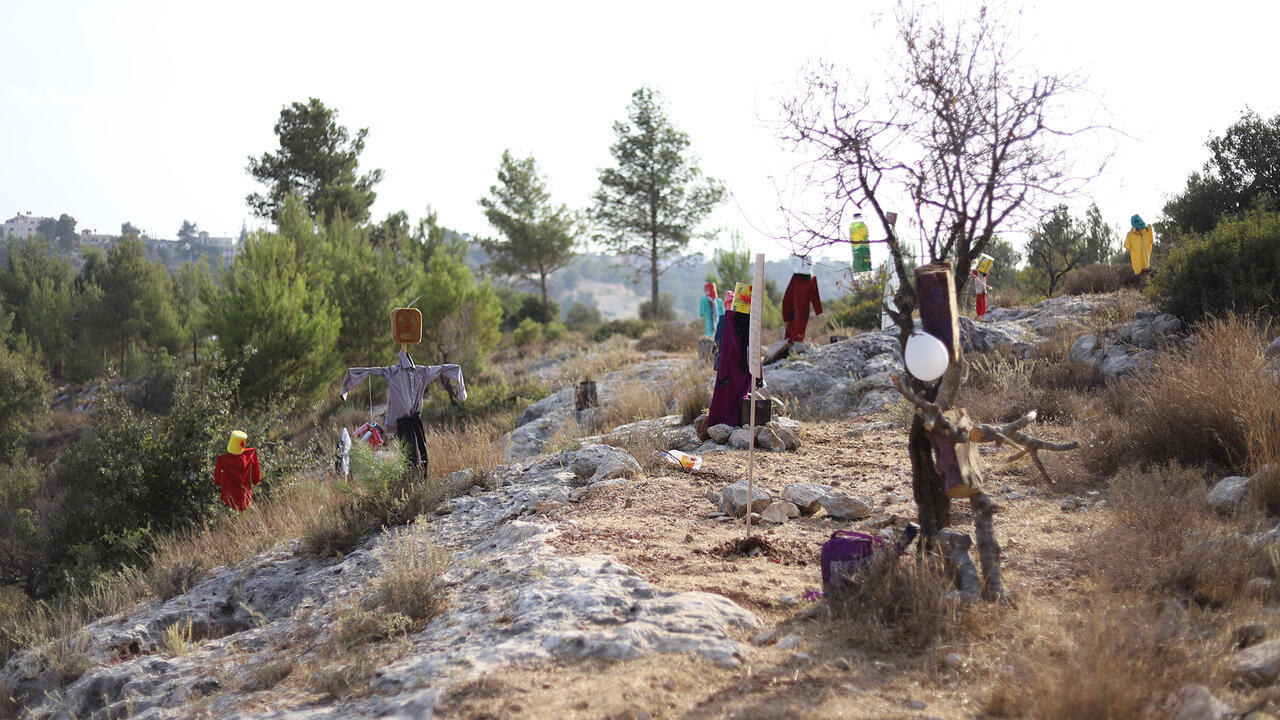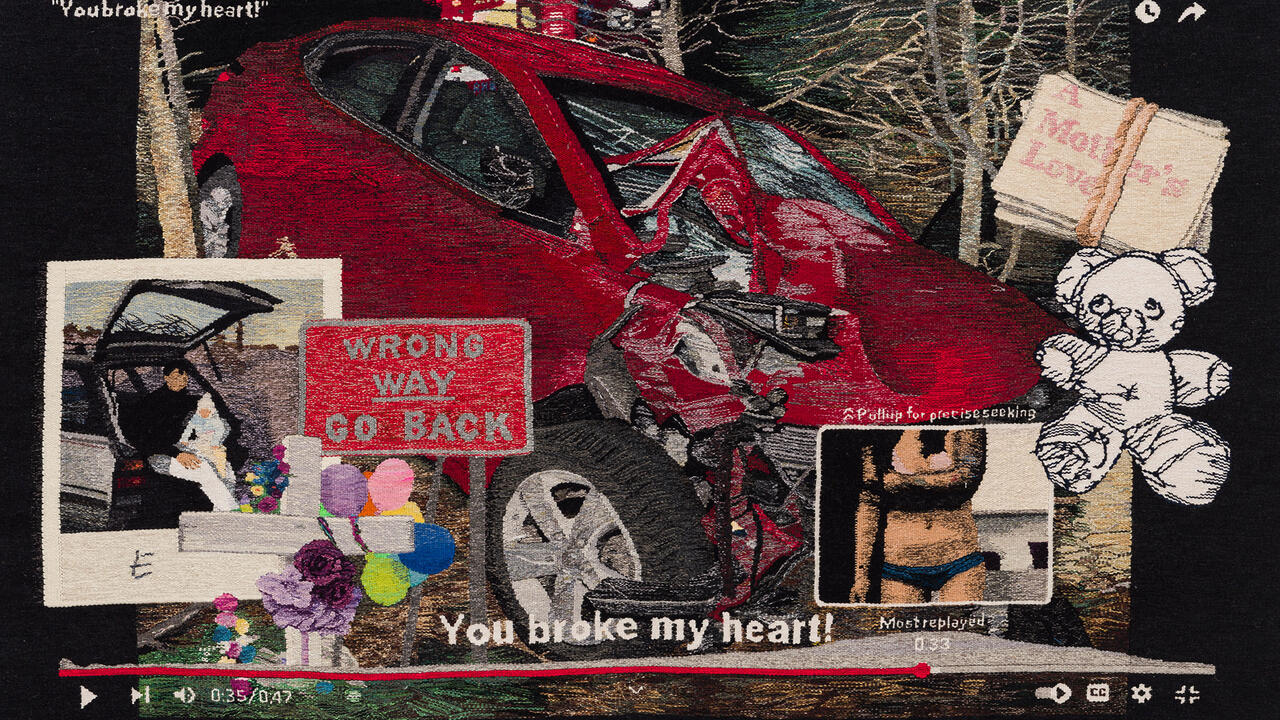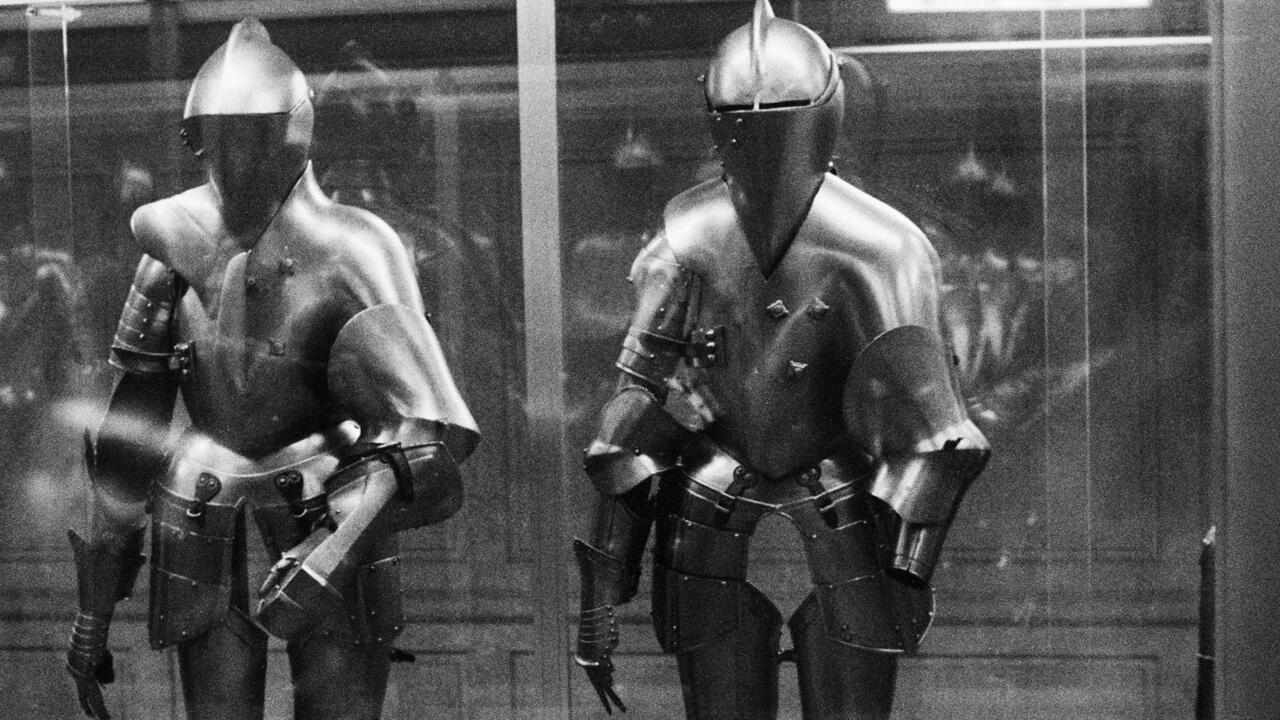What Modernism Learned from the World’s First Grain Elevator
In Buffalo, the artist Marlene McCarty has planted a toxic garden that draws on the area’s intertwined histories of capitalism, expropriation and utopian dreaming
In Buffalo, the artist Marlene McCarty has planted a toxic garden that draws on the area’s intertwined histories of capitalism, expropriation and utopian dreaming

‘Everything else so far now seemed to have been shaped interim to my silo dreams,’ Erich Mendelsohn wrote to his wife in 1924. ‘Everything else was mere beginning.’ The German architect was perched at a bend in the Buffalo River, in upstate New York, grain elevators towering over him. It was late in the day. He described ‘the sharp evening light’ and the ‘chaos’ of activity around him, as well as the ‘mountainous silos, incredibly space conscious, but creating space’. That language is magic – a contradiction, too, bending physics by being mountainous and space conscious. ‘I took photos,’ he said, ‘like mad.’
I do too. I’m here nearly 100 years later at the same time of day, but there’s no chaos, no workers, none of the ‘crane monsters’ or ‘hordes’, just weeds and scrub and hulking remains. I came here for Marlene McCarty, an artist whose work I love, ahead of her exhibition at the University of Buffalo. She has been making mural-sized drawings of all the mess of the current moment, weaving capitalism, modernism, patriarchy and the white Western canon with poisonous plants and decay. At this bend in the river, she is also planting a garden with the toxic flowers that appear in her drawings.
Walter Gropius published photographs of Buffalo’s grain elevators in the Jahrbuch des Deutschen Werkbundes (Yearbook of the German Association of Craftsmen) in 1913 (the same year Marcel Duchamp made the first of his many Bicycle Wheels). A decade later, Le Corbusier included them in Vers une architecture (Towards an Architecture, 1923). Neither had ever seen them. They had little idea how they functioned. Only Mendelsohn – on a pilgrimage the year he began the collective practice Der Ring with Gropius and Ludwig Mies van der Rohe – witnessed them firsthand.

In Vers une architecture, Le Corbusier called the silos ‘the first fruits of the New Age’. They shaped what came to be known as the international style, its name implying an architecture of no place that could be imposed anywhere in the world. But it was inspired by these things distinctly of this place, this city, this bend in the river. The international style eventually became the default look for corporate headquarters, though the European modernists had started out with largely progressive ideals.
What the silos truly are, though, are tools of capitalism. Merchants used them to store vast quantities of grain, meaning markets could be manipulated. Traders and middlemen profited and farmers lost out under this new system. The grain elevators ushered in the US’s first futures market, which has fundamentally shaped the way that capitalism works today. Now the silos are ruins, but they built Buffalo’s wealth. The city was once the world’s largest grain shipping port. It was also Seneca land. This little strip, this bend in the river where Mendelsohn and I have stood, is just outside what had been the Buffalo Creek Reservation. After the 1775–83 Revolutionary War, the Seneca were forced to cede land for supporting the British and carved out a handful of reservations across New York. The state conspired with Massachusetts to sell the pre-emptive rights to those territories to a succession of land companies and, after the Erie Canal opened in the 1820s, those companies forced the Seneca out. The land was too valuable. The canal linked grain grown on the prairies to capital markets: all through Buffalo, its end point on Lake Erie. Here, capitalism and nationalism aligned in President Andrew Jackson’s 1830s Indian Removal Act.
The ground at my feet is slag from the abandoned Bethlehem Steel plant nearby. Above me, cottonwoods are silhouetted against the darkening sky. The saplings sprout from the silos’ roofs, growing in any chink in the concrete. Nearby, a hole has been dug into the ground where Marlene’s garden will be, to test how deep the slag goes. Water has seeped in and reflects the clouds.
The year the Seneca lost the reservation land, 1842, was also the year the world’s first mechanized grain elevator was built. It was constructed in Buffalo by Robert Dunbar, an engineer, and Joseph Dart, a merchant who’d first traded with the Haudenosaunee. The Haudenosaunee confederation, known in the US as the Six Nations and in Canada as the Iroquois, is a union of the Cayuga, Mohawk, Oneida, Onondaga and Seneca, joined later by the Tuscarora. Seven hundred years before the land was stolen and the grain elevator built, in 1142, the Haudenosaunee formed the first participatory democracy under the Great Law of Peace. It enshrines equality for all. Women and men have such balanced powers that it’s almost impossible for me to understand in the context of the battles between the sexes and fights for parity that frame my picture of feminism. Haudenosaunee society was matrilineal. Women chose chiefs and could impeach them; property, family ties, home all passed through women.

Six hundred years after the league was formed, an Onondaga chief implored the disparate British colonies in America to unite as the Haudenosaunee had. This idea of United + States wasn’t the only thing we took from them. Nor was land. The nascent US borrowed language from the Great Law of Peace and even national symbols like the bald eagle and a bundle of clutched arrows – five for original Haudenosaunee nations, 13 for the US colonies. Come the Revolutionary War, though, George Washington waged a campaign of ethnic cleansing against the league, which is why the Seneca ended up along the Buffalo River. The settlement was a refugee camp.
A mile away, one of the last half-dozen remaining grain elevators was torn down in 2005. The site was bought by the Seneca Nation: it is now sovereign land. On it stands the Seneca Buffalo Creek Casino where the house return is 92 percent. I’d rather it were 98 percent. After all, the Haudenosaunee have been cheated for centuries by treaties that weren’t fair or were full of lies or were broken. Like the 10,000 acres from the Seneca Alleghany Reservation that were taken to build the Kinzua Dam in the early 1960s, violating a treaty Washington signed in 1794. Or the 550 acres taken from Tuscarora Reservation by Robert Moses for the Niagara Power Project in 1960. The Tuscaroras were initially offered compensation of US$1,000 per acre while, at the same time, the neighbouring Niagara University was offered US$50,000 per acre. Or there’s the St Lawrence Seaway, built in the mid-1950s, which ate into 1,200 acres of Mohawk land in Canada and the US.
The casino money funds housing, healthcare, college educations and programmes to keep the Seneca language alive. Inside, a discreet sign for the Haudenosaunee confederacy – the wampum belt pattern for the Great Law of Peace – is carved on the wall just above the doors. If you didn’t know what it was, you’d miss it.
Like the early modernists, architectural critic Reyner Banham probably knew little of Buffalo’s Seneca heritage when he moved here to teach in the 1970s. He wrote A Concrete Atlantis (1986) largely about the silo’s history as a precursor to modernism. He kayaked along the river to see them as they’d been captured in his heroes’ books. He described one elevator, printed in Bruno Taut’s Modern Architecture (1929), as ‘impermeable, secret and aloof’. The structure is a quarter-mile long and seems to defy language. All of them do. To write of them is to revert to metaphor or simile, some language of ‘akin’. What akin establishes, though, is a relation not of kinship, but distance: they’re almost impossible to describe. I see them as fortresses; Banham likened them to Roman ruins, with ‘ravaged antique grandeur’ and ‘an avenue of mighty tombs’. His accounts read like some 19th-century man on his grand tour.

Banham famously coined the term brutalism, in 1955. It was also a mistranslation, derived from the French béton brut, meaning raw concrete; he conflated the terms hoping brutalism would be true to its materials. When Banham came up with the name, only a couple of buildings fit his definition, one of which was Le Corbusier’s Unité d’Habitation in Marseilles. Yet, Banham conjured an entire movement by will of the written word and brutalism was married to architecture that embodied social progress: public housing, courts, government services and schools.
These grain elevators pioneered the slip-form method of pouring concrete used in brutalism. Banham moved to Buffalo just as the last brutalist buildings were being constructed in the city, which has – or had – some of the best examples in America. Now, they are disappearing.
People here long to protect the silos. There is talk of turning this stretch of the river into a national park. Near Lake Erie, however, jagged gashes have been ripped into Paul Rudolph’s brutalist Shoreline Apartments. Built of ribbed concrete, they were ambitious low-income housing, designed while Rudolph headed the Yale Architecture School. He’d planned an entire neighbourhood: school, community centre, shopping and enough housing to mean the community would be economically diverse. All that was built were the Shoreline Apartments, and they are full of holes.
Orange construction netting surrounds them, though it won’t keep intruders out. The final resident stayed until marshals evicted him in 2018. Soon, a kiosk will stand here, with Rudolph’s original design etched on a fragment of his ribbed concrete. It will include the entire plan: a drawing will be all that is left of his grand dreams.
In Buffalo, language falls apart. It is full of holes and mistranslations: the grain elevators that accelerated capitalism, the brutalism that made humane social housing, the Haudenosaunee constitution that became the United States’ poor version. There are also no Buffalo in Buffalo. Bison likely never roamed here. In some accounts, the place was named for a Seneca fisherman with a hunchback who fished along the creek where the silos stand. Or, it may be a mispronunciation of the French beau fleuve, beautiful river.
The breakdown in language exposes gaps where things don’t fit easily. Mohawk scholar Taiaiake Alfred writes about how European languages are dominated by nouns and names that have allowed colonizers to conquer and control. Opening up the holes in language can be profound. It’s an opportunity to sit with the larger history of this place. If you stop believing in linear history, the past isn’t over: it is present and alive here at this bend in the river, and can also point us towards a more equal and collectivist world.
After his silo dreams, Mendelsohn went on to build a factory in the Soviet Union, thrilled by experiments in socialism. Marlene’s garden will be full of weeds and herbs to empower women: mugwort and pennyroyal, Queen Anne’s lace and cotton. Used for centuries before modern medicine was widespread, they work like the birth control pill or the morning-after pill, to bring on a menstrual cycle or induce abortion. They give us control over our bodies at a time when the US’s laws grow more restrictive and sexist. The Haudenosaunee are still in upstate New York, still in Buffalo, and the Great Law of Peace is still in effect after nearly a thousand years.
This article first appeared in frieze issue 207 with the headline ‘All That Happened Here’.
‘Marlene McCarty: Into the Weeds’ continues at Center for the Arts, University at Buffalo, USA, until 2 February 2020. Into the Weeds (A Deliverance Garden) opened at Silo City, Buffalo, in October, and is a permanent installation.









